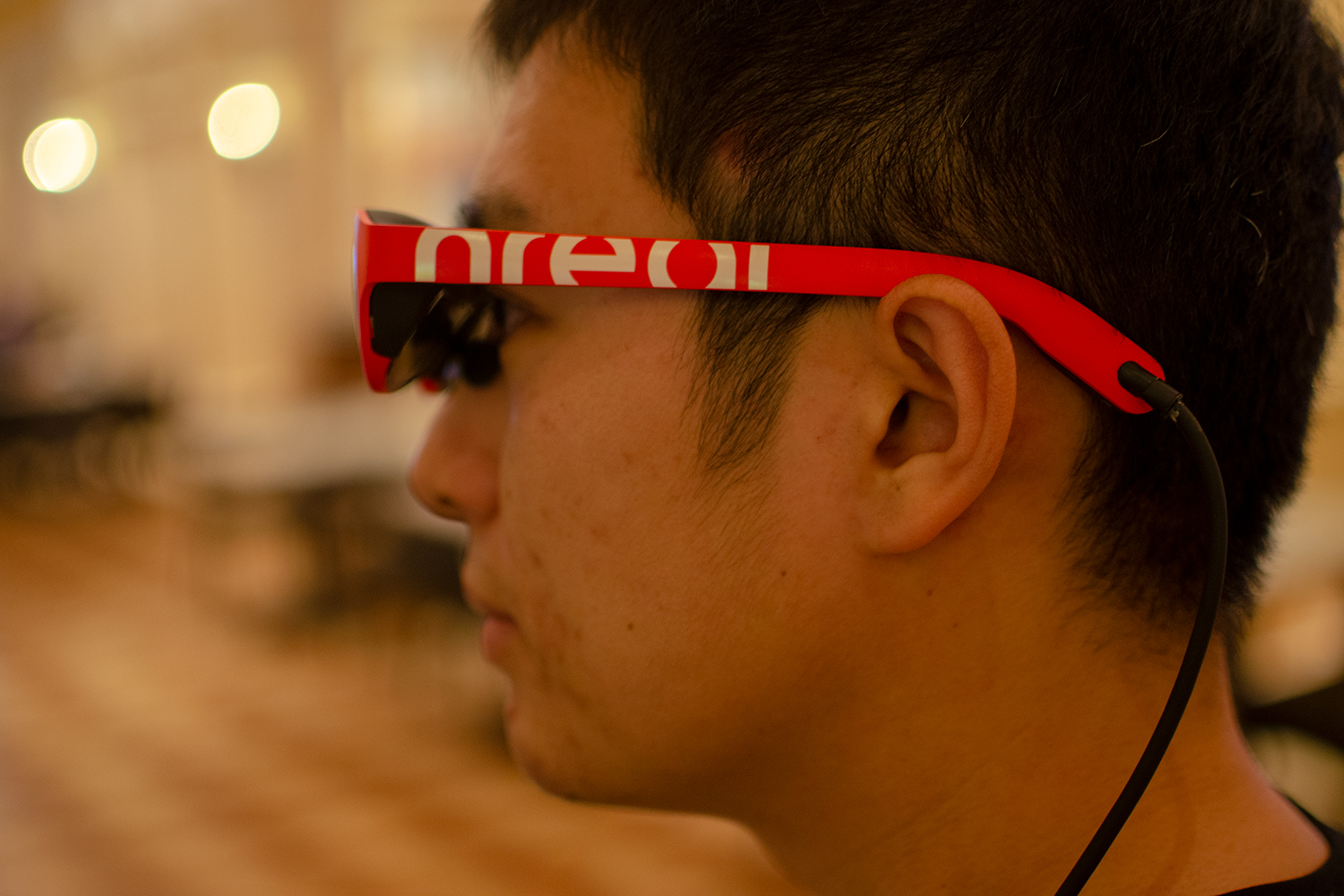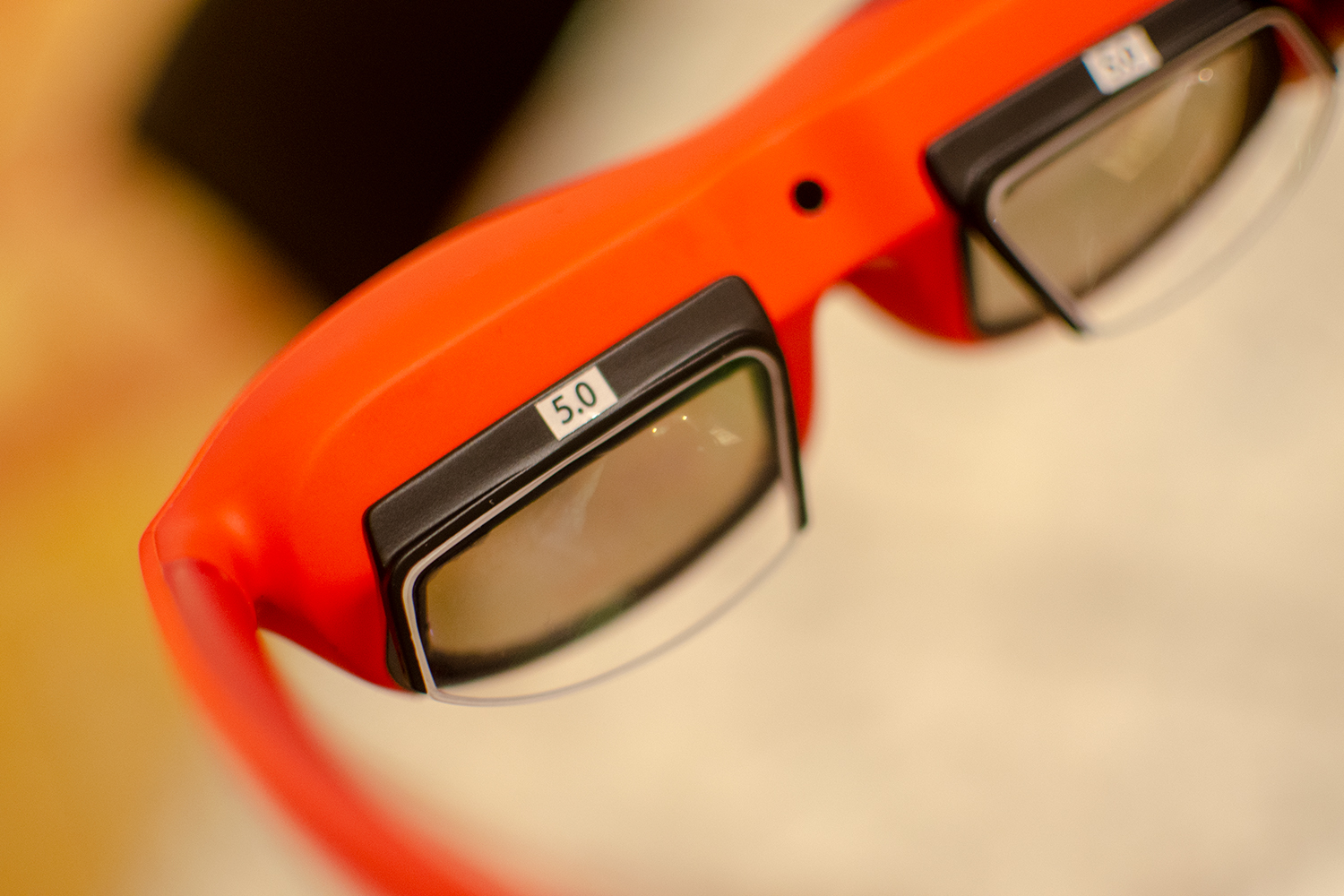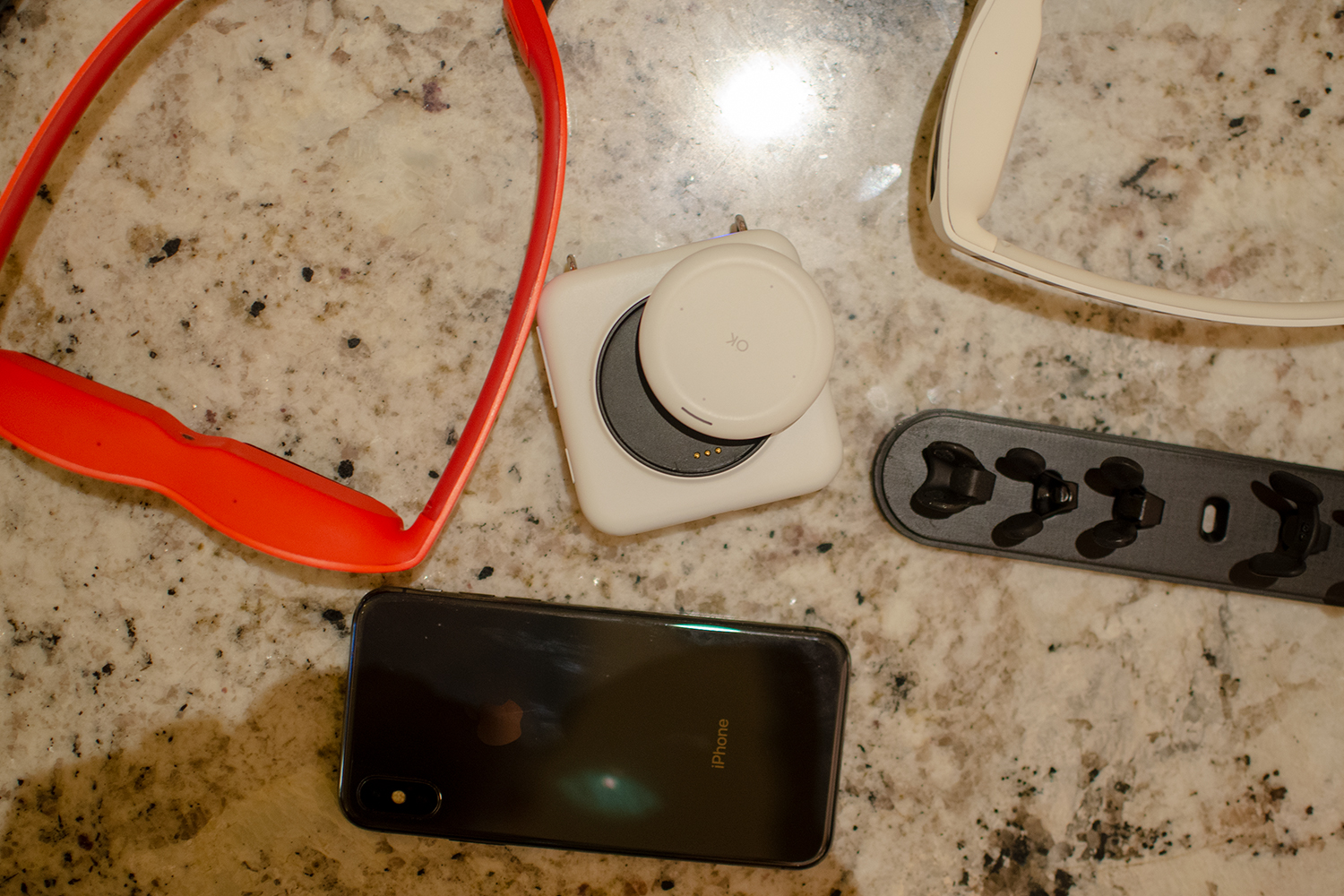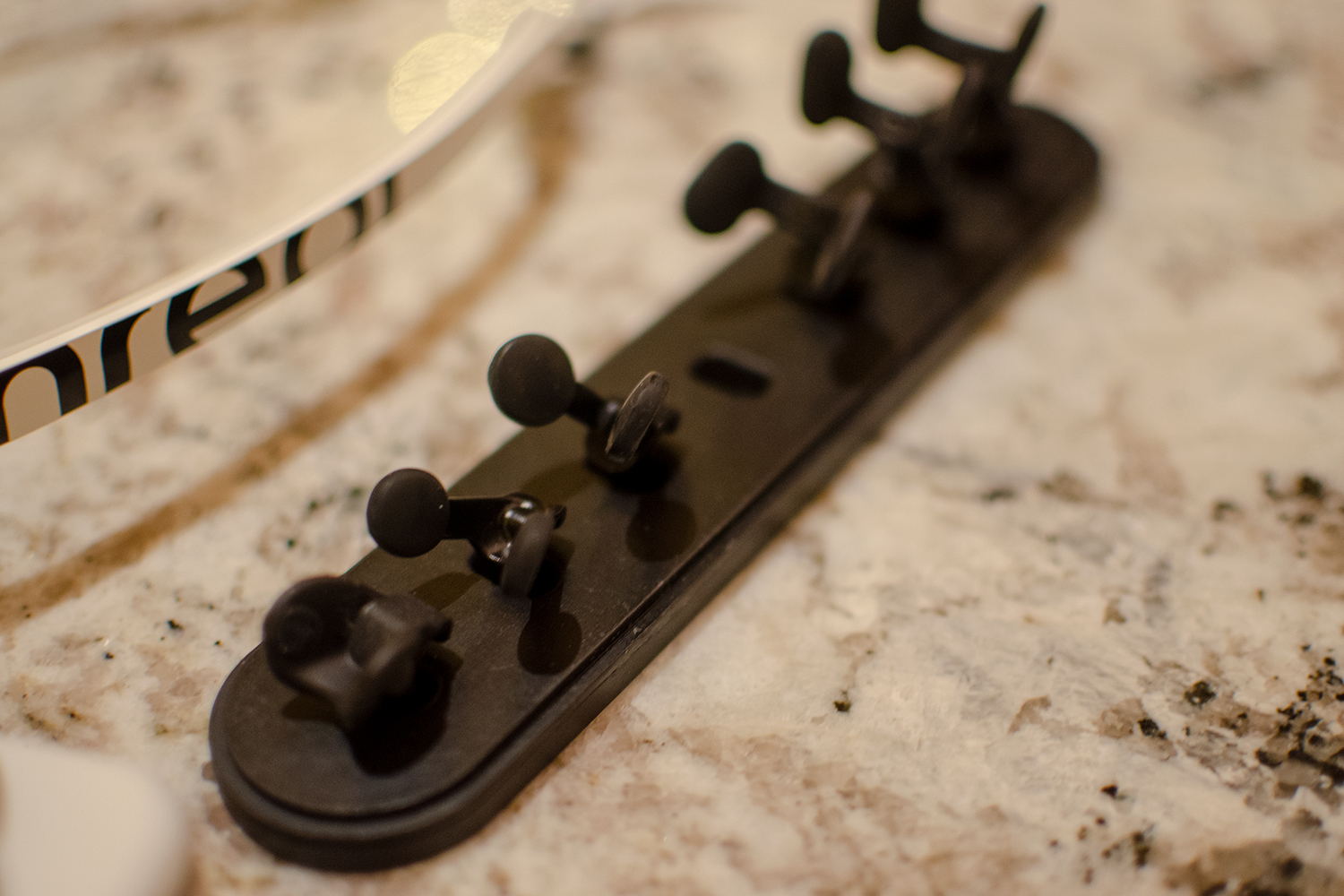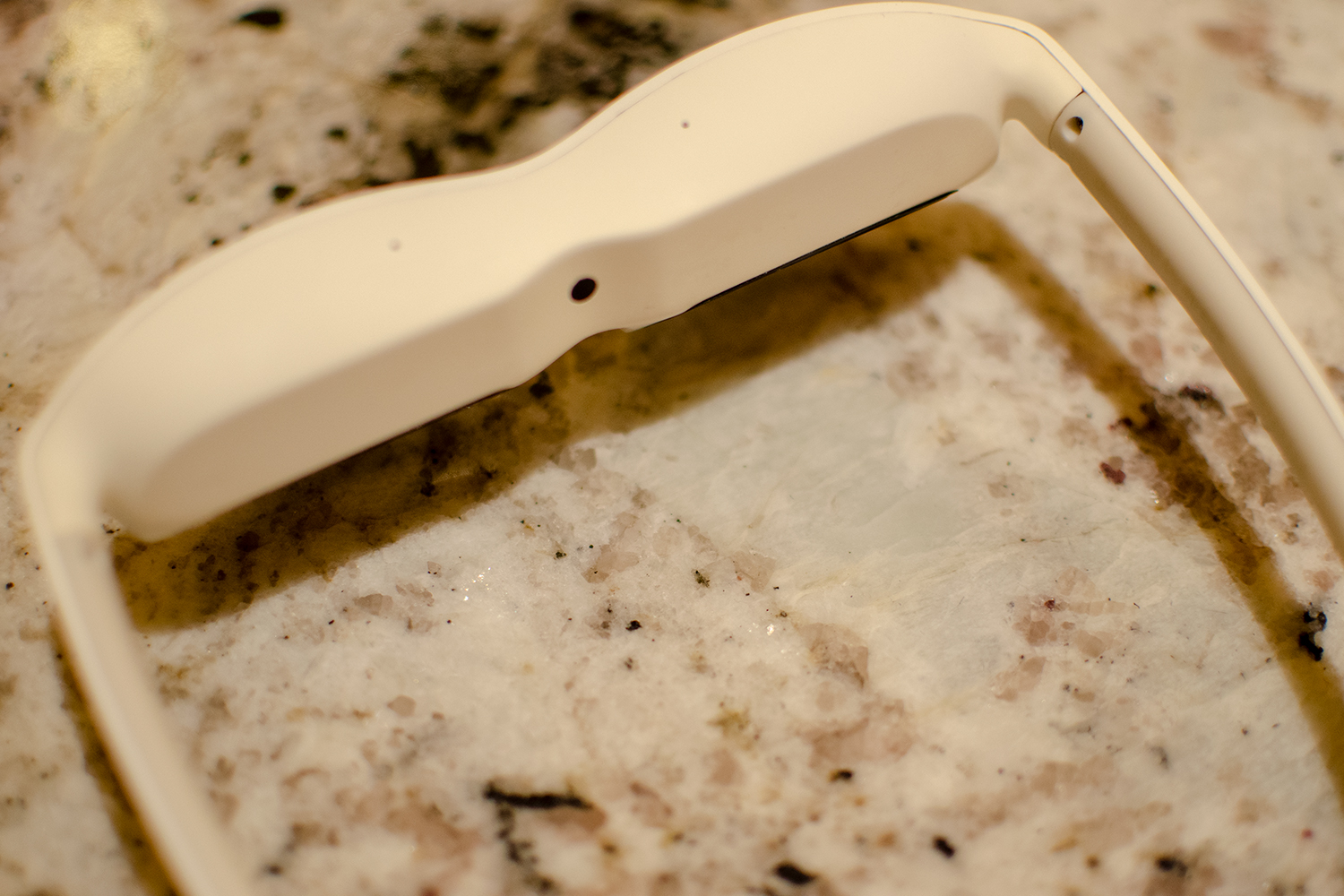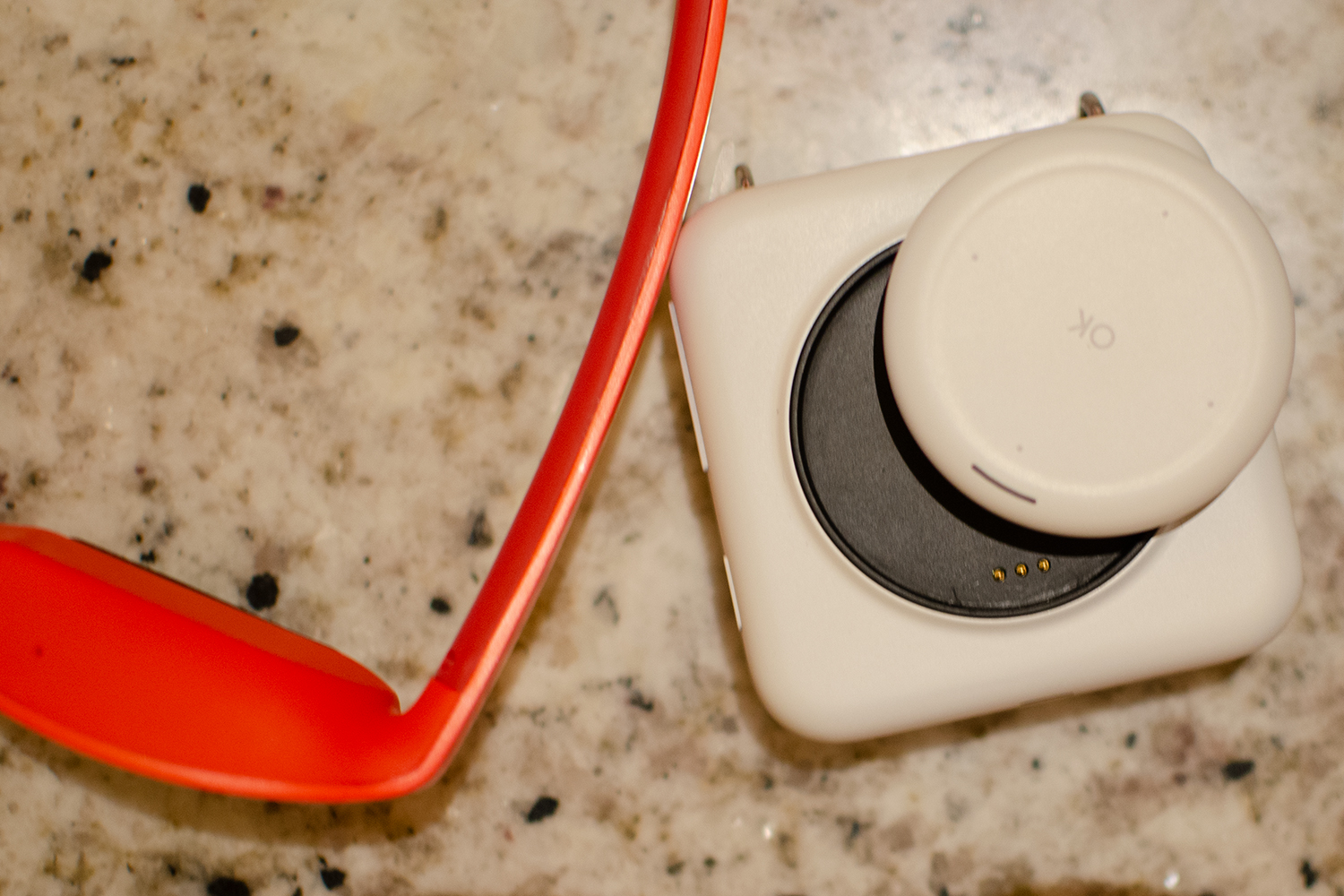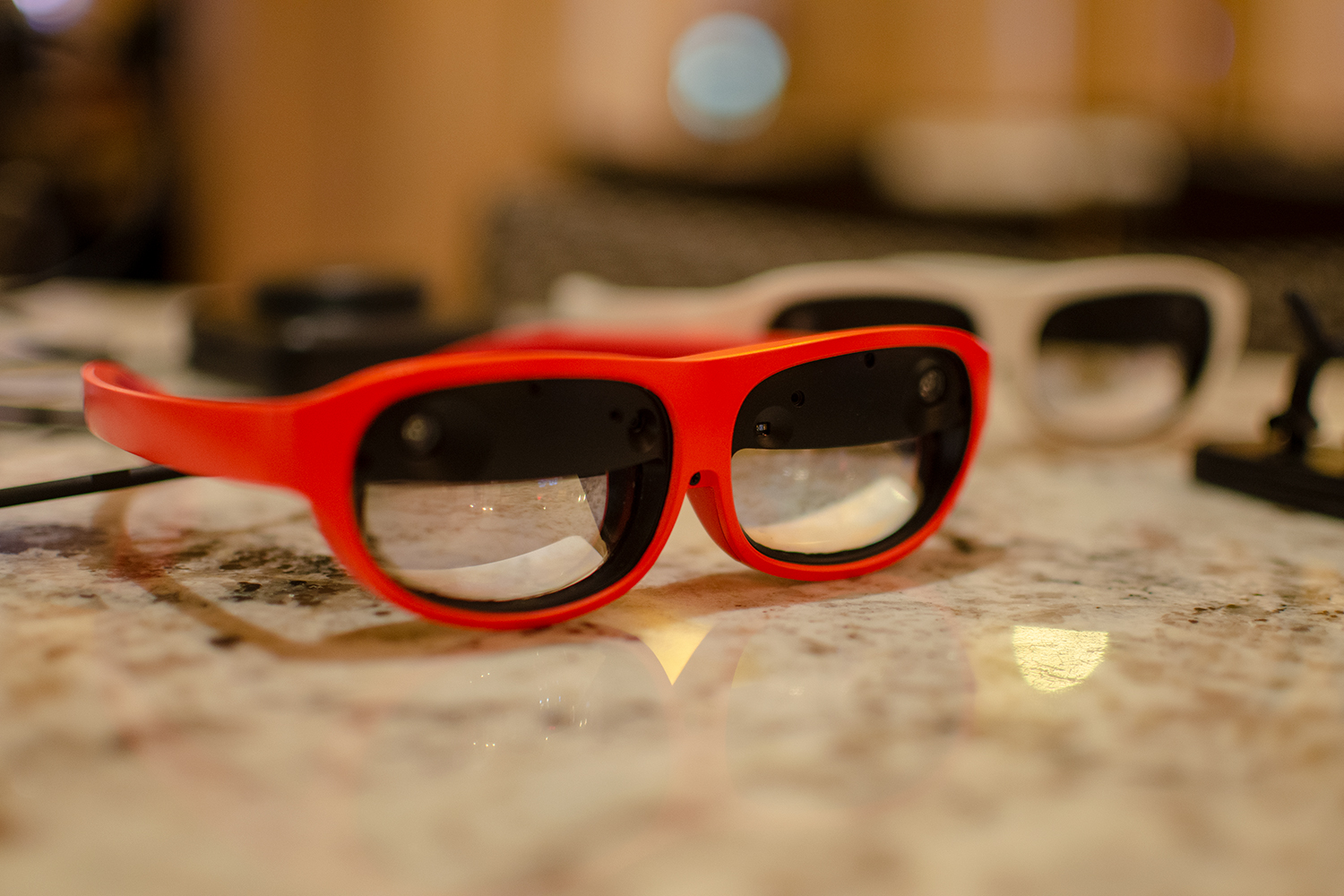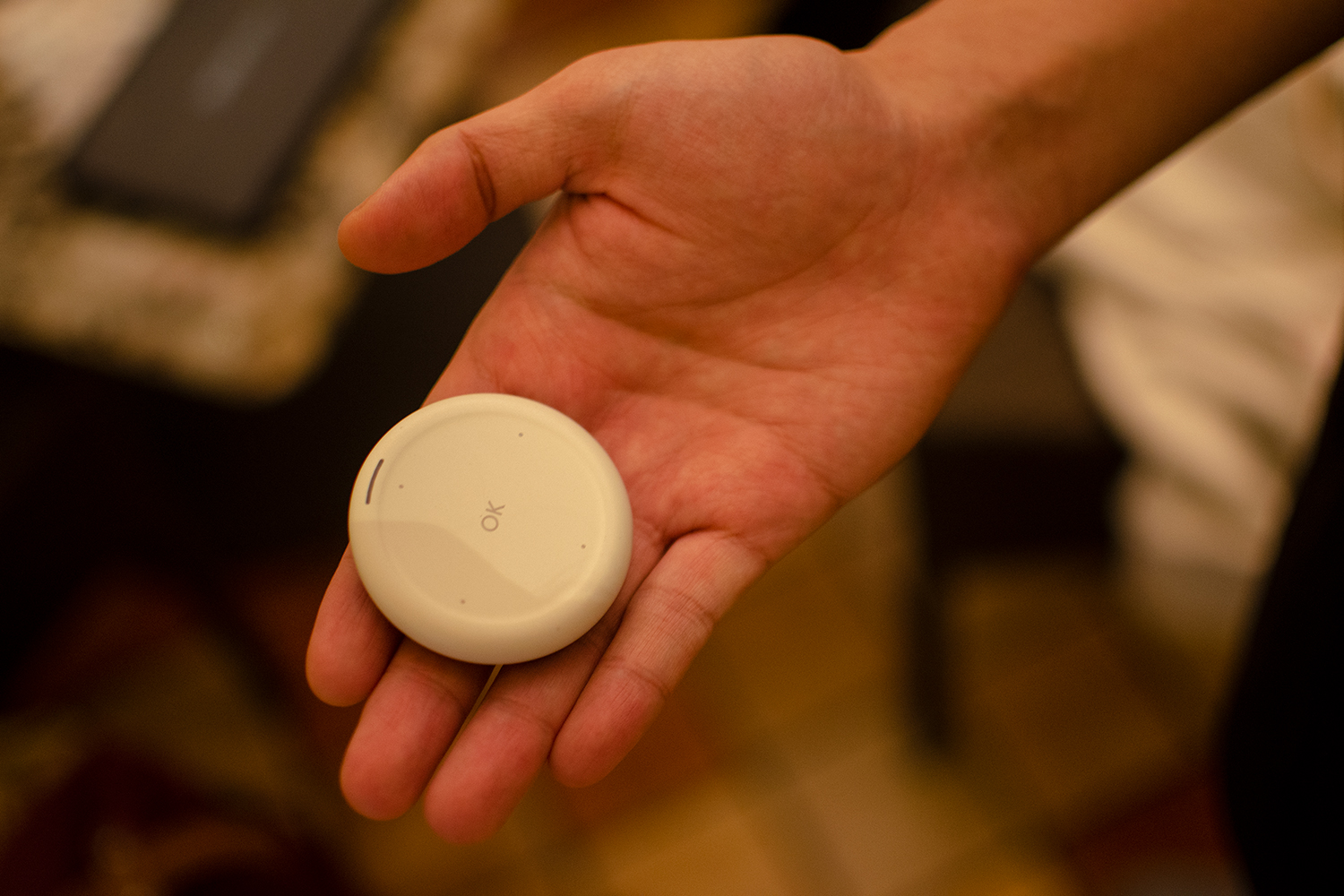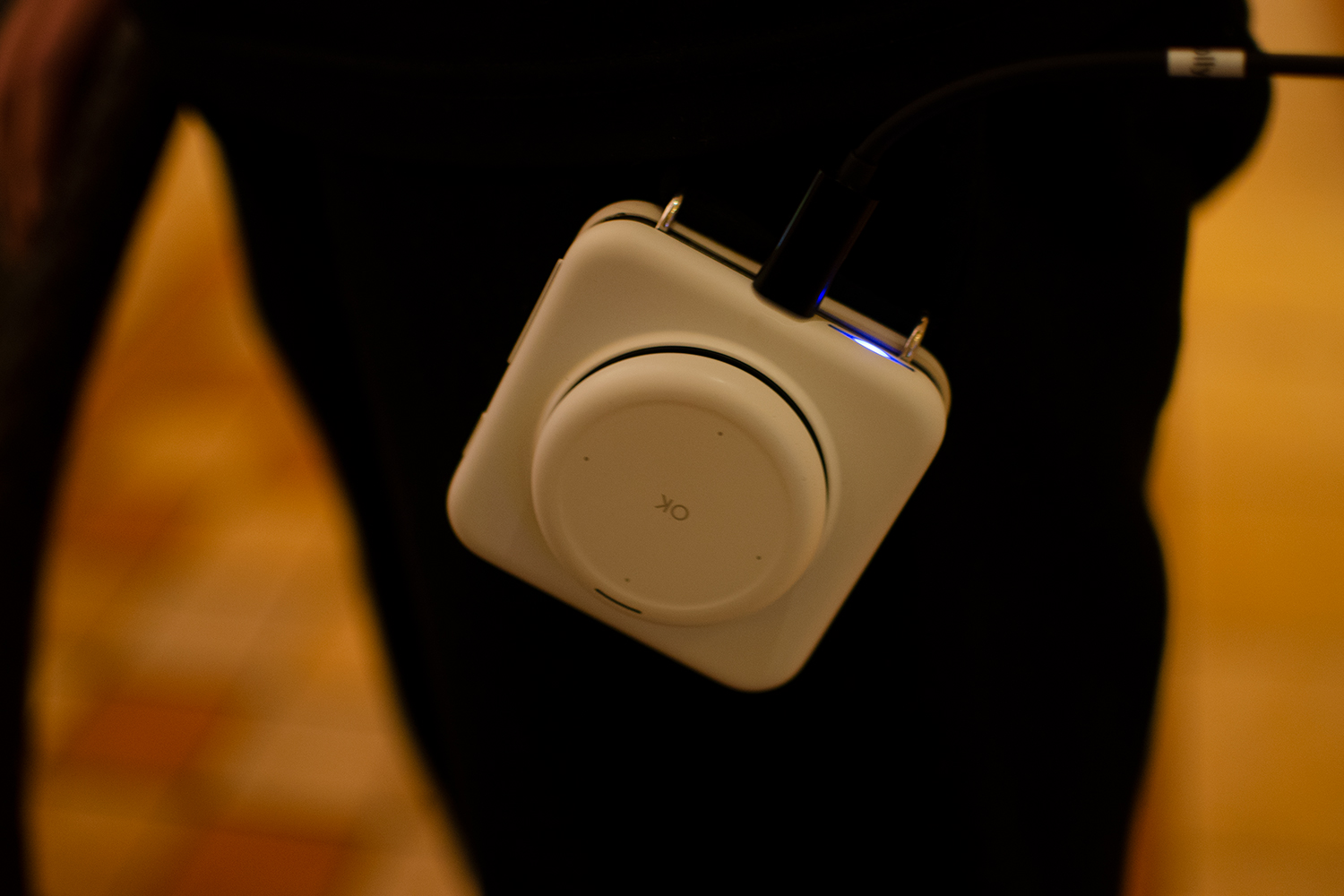Mixed reality headsets let you stay in the real world while layering virtual objects over on top. These virtual objects can be video games augmented on top of a table, or even a simple rectangular screen to watch movies — the glass is still transparent so you can see your surroundings. At the moment many of these products such as the Magic Leap One or Microsoft’s HoloLens aren’t devices you’d take out of the house because they’re cumbersome and have a lot of parts.
A company called Nreal — founded by a former Magic Leap employee — has further miniaturized the tech so it’s a little more portable, but it’s still a wearable you won’t want to be seen wearing in public. We tested the Nreal Light at CES 2019 to see what they’re like.
Styled like sunglasses
The Nreal Light is a pair of glasses that resemble Snapchat Spectacles. They’re designed to look more like sunglasses than regular glasses, but these are wearables you can’t walk around with outside — or at least, it’s not recommended. It’s not just that they look a little ridiculous as the front is much thicker than the arms, but they’re just not meant to be augmented reality glasses like Google Glass or North’s Focals.

Like Magic Leap One, the Nreal Light has a wire that’s comes out of one the glasses’ arms, and it goes on to connect to a miniature puck that houses the electronics powering the device, namely the Snapdragon 845 chipset. It also doubles as a battery to keep everything running (for around three hours). You can either clip the processing unit to your pants, or there’s a magnetic strap you can use to hang it around your neck while using the Nreal Light.
Attached to this puck is a circular remote that you can remove — it’s the controller you use to interact with augmented reality interface, and it feels somewhat like a smooth pebble. There are a few buttons on it to help you navigate the augmented interface.
More from CES 2019
- Lenovo ThinkPad X1 Yoga (4th Gen) hands-on review
- Sennheiser says you have to hear its new Ambeo soundbar to believe it
- Razer Raptor 27 hands-on review
Once you’ve donned this whole set of devices, you’ll undoubtedly be self conscious about your looks, as you should. The glasses look unnaturally thick towards the front, and the tethered processor adds to the geeky-ness. This all being said, it’s one of the most normal pair of mixed reality glasses we’ve seen to date, especially compared to the likes of HoloLens and Magic Leap One, which are considerably bulkier. The Nreal Light’s components are lightweight and small enough to be able to toss into a bag and take on the go.
If you’re wondering about prescriptions and fit, there are different types of nose ridges you can choose from to ensure the glasses fit your face better. Nreal is also offering prescription lenses that can magnetically attach to the inner area of the glasses, so you can remove your glasses and still see content in the Nreal Light clearly. The glasses fit on our face well, though they did feel as though they could side off if we looked directly at the ground. It’s comfortable enough, though it does tend to get hot the longer you use it, and our nose bridge felt a bit sweaty.
Sharp images, large field of view
What sets the Nreal Light apart from many of its competitors is the impressive quality of the screen. It’s a 1,080 pixel resolution screen, but considering how close it all is to your eyes, movies and other content look stunningly sharp and colorful. Even better is the field of view, which is 52 degress. A few scenes of movies we watched filled up a large part of the glasses, making them feel more immersive.
We looked at various animations and game demos, and the screen technology in the Nreal Light consistently impressed us with its clarity and detail. It’s the highlight of the glasses. There are also speakers built into the end of the arms of the glasses so you can hear what’s going on as you watch the screen.
The Nreal Light offers six degrees of freedom, and the controller has three three degrees of freedom. We were able to walk around virtual objects, move up close or get low to the ground, and still see these articles items in the real world without issue. We played a game where we walked about 10 steps forward into a portal, where a gigantic space battle enveloped our field of view, and we used the controller to shoot laser beams at other ships. The game was just a small demo so it wasn’t much fun, but it’s a great way to show the potential of the glasses, and how interactive they are in any given space.
This is made possible with two cameras and sensors on the front that use “Simultaneous Localization and Mapping” algorithms to track the environment. It did a great job of keeping virtual objects in place as we walked around the room.
Use cases
There’s not a ton the Nreal Light can do at the moment, but a good deal of content will be packed in the box when it arrives later this year. What the company is working on now is getting third-party developers to bring ARCore Android apps and ARKit iOS apps to support Nreal’s platform, which is supposedly quite easy. If developers hop on board, Nreal Light will have a wide variety of apps and games available. Since it uses a USB-C cable to plug into the processor, you can also plug the glasses directly into a USB-C phone or laptop to watch content from your own devices.
You’ll be able to watch a movie on a plane using the glasses; play a tabletop game; design a living room and see how furniture will look in the home; and more. It’s tough to say for certain how this will all work as we weren’t able to see how much content there is available at the moment, and how much will be ready by the time the product ships.
Nreal told Digital Trends it plans to have some type of app store, where developers can publish mixed reality content for the glasses.
Pricing and availability
Nreal said the Nreal Light will cost $1,000, and the company plans to release it in the third quarter of 2019.
It’s tough to justify why anyone would really want to purchase mixed reality glasses, as the use cases are quite niche, and the devices are still cumbersome. Nreal has managed to make the technology more portable than we’ve seen before, which is promising. Now only if it looked a little more elegant.
